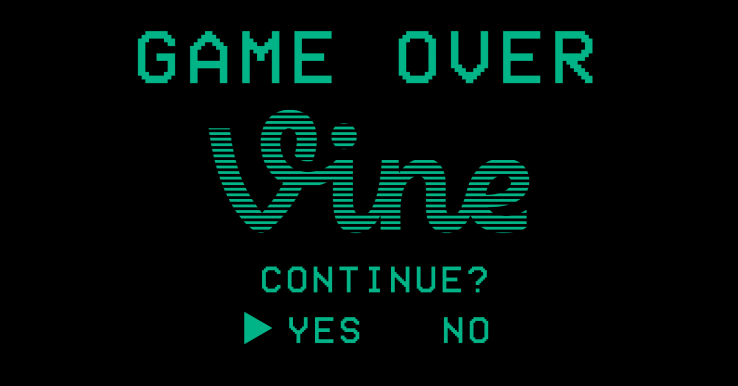Ukraine’s most perilous winter so far
Jamie Dettmer is opinion editor and a foreign affairs columnist at POLITICO Europe.
This winter is shaping up to be the most hazardous of the war for Ukraine — at least since the early months of the invasion nearly four years ago, when Russia’s armored columns were closing in on Kyiv.
Back then, doughty Ukrainian resistance, the 2,000 anti-tank missiles Britain supplied just weeks before the invasion and Russian tactical incompetence saved the day — along with President Volodymyr Zelenskyy’s defiant refusal of an American offer to evacuate him.
Now Ukraine is facing another crunch winter — one that heroism and improvisation might not be able to overcome. That’s in part because the country’s fate won’t entirely be in its own hands. A lot will rest with Western allies as the Ukrainians struggle through the frigid weeks and months to grapple with three huge challenges.
First, Ukraine will face a funding crisis as 2025 turns into 2026 and is on course to run out of cash in February unless Belgium lifts its block on an audacious plan to issue a €140 billion reparations loan using immobilized Russian Central Bank assets held in a securities depository based in Brussels. The proposed scheme would see the EU exchange the Russian assets for zero-coupon AAA bonds, with the cash going to Kyiv. Ukraine would only have to repay in the event Moscow agrees to pay Kyiv war reparations.
But as the clock ticks toward a make-or-break EU summit next month, there are few signs of the deadlock being broken between EU officials and the Belgian government, which is worried about legal claims against it and retaliation from Russia. And the problem has only been complicated by Slovakia’s Prime Minister Robert Fico announcing last week that he will also oppose using Russian frozen assets to fund Ukraine’s defense spending.
Without the reparations loan, the EU will be hard-pressed to come up with the funding Ukraine needs, which is even more urgent now that U.S. financial support has been discontinued under President Donald Trump. Without the reparations loan, it seems highly unlikely that member countries will agree instead to borrow the funds on the market. Cash-strapped governments are not keen on the idea of being on the hook to pay the interest.
That might leave a “coalition of the willing” to try to raise funds against the backdrop of political turmoil in Kyiv and a mounting hue and cry over corruption allegations. This week, a former business associate of Zelenskyy fled the country as independent corruption investigators charged him and six others over an illegal scheme to control key state-owned enterprises, including Energoatom, Ukraine’s nuclear energy agency.
Defense procurement corruption is also in the sights of investigators and, according to people close to the investigation, who asked not to be identified, more raids will take place shortly on the Ukrainian defense ministry as part of a probe into inflated procurement contracts.
“All of this is very bad timing just as Brussels has to decide on more funding for Kyiv,” a foreign adviser to the Ukrainian government told POLITICO. “This is causing the Ukrainians tremendous problems in terms of convincing Western allies to continue funding. And it’s ammunition for those in the MAGA crowd and those in Central Europe, the Hungarians for example, to say, ‘Why are we doing this?’”
A former Ukrainian official, who also was granted the right not to be identified in order to discuss sensitive issues, said he expected Western funding and weapons would continue as Ukraine is “too big to fail.” But Brussels will communicate very strongly behind the scenes its displeasure and tie more tightly some future project funding to reforms.
The second problem is on the battlefield, where Ukraine is coming under increasing pressure from Russian forces and on the brink of losing the town of Pokrovsk, an important logistical and transport hub where fighting has been raging for more than a year.

Losing Pokrovsk would trigger a new stage in the battle for Donetsk and give the Russians greater leeway in trying to overrun the 25 percent of the region it hasn’t managed to seize. It would put Russian commanders in a stronger position to threaten the strategically significant towns of Kramatorsk and Sloviansk.
What’s adding to worries is that Ukrainian commanders may have been tactically outmatched in the battle for Pokrovsk, having fallen for a Russian ruse in August when they were seemingly hoodwinked by a Russian offensive on the neighboring town of Dobropillia.
“The Russians distracted our generals with a breakthrough at Dobropillia, then used this to break through at Pokrovsk,” said Mariana Bezuhla, a lawmaker who’s a strident critic of the Ukrainian Armed Forces commander, General Oleksandr Syrskyi.
Bezuhla, a former deputy chair of the Parliamentary Committee on National Security and Defense, isn’t alone in thinking Ukrainian commanders made tactical errors in Pokrovsk, including diverting reinforcements to Dobropillia at a key moment.
Now there’s concern that the Russians are seeking to capitalize on Ukraine’s rearguard action in Pokrovsk by mounting forays into Dnipropetrovsk region in the south and Zaporizhzhia. “Despite the heroism and modernity of many people in the Armed Forces of Ukraine, the Ukrainian army’s decision-making system simply can’t keep up and is being jerked around within a framework set by the enemy,” Bezuhla added.
The battle for Pokrovsk has again highlighted Ukraine’s severe manpower shortage. In some sections of the front line, Russia enjoys a 10-to-1 manpower advantage. In the countryside, that isn’t such a problem as drones and remote-controlled systems dominate the battlefield. But when engagements involve close-quarter combat in urban settings, as in Pokrovsk, the Russians have an advantage.
Aside from worries over funding and what’s happening on the battlefield, there’s the third big challenge of the winter — the energy war.
In past winters, Ukrainians were focused on keeping the lights on as Russian airstrikes relentlessly pummeled its power grid, part of the Kremlin’s strategy to enlist “General Winter” to exhaust Ukrainians’ stubborn spirit of resistance. Thanks to Ukrainian improvisation and engineering ingenuity in patching up the damaged system, along with energy imports from Europe, the lights largely stayed on — albeit with rolling blackouts and outages, among the worst back in October 2022.
This time round, though, the Russian attacks are of much greater magnitude and the Ukrainians don’t have the air defenses to cope, nor are they likely to get them soon. On top of that, Russia has adjusted its tactics by targeting not only the power grid but also Ukraine’s natural gas infrastructure. Sixty percent of Ukrainians rely on natural gas to keep their homes warm.
With the Ukrainian winter just a month away, the country may have lost a third of its natural gas production capacity, possibly more. In early October, Bloomberg reported that 60 percent of domestic production capacity had been disabled in strikes on facilities in Poltava and Kharkiv, Ukraine’s main gas extraction regions. Authorities subsequently claimed that repairs had restored half of what was lost.
But attacks have come thick and fast since, in what Sergii Koretskyi, chairman of Naftogaz, the state-owned national oil and gas company, has dubbed “acts of terrorism.” In just one October week alone, a series of three Russian strikes targeted gas extraction facilities in the regions of Kharkiv, Sumy and Chernihiv. The size of the challenge was highlighted over the weekend with yet another massive attack on Ukraine’s energy and gas infrastructure, which plunged a large part of the country into the cold and dark.
Former Energy Minister Olga Bohuslavets has warned: “It is already clear that this winter will be much harder than all previous ones.”
It is indeed going to be a hard winter for Ukraine. The big question is whether the country will emerge in good enough shape to resist a bad peace deal being foisted on it.




















:quality(85):upscale()/2023/09/18/918/n/1922398/a1136b676508baddc752f5.20098216_.jpg)
:quality(85):upscale()/2025/10/09/670/n/1922283/00b944c868e7cf4f7b79b3.95741067_.jpg)
:quality(85):upscale()/2025/10/15/765/n/1922398/29c37a6e68efd84bb02f35.49541188_.jpg)
:quality(85):upscale()/2025/09/09/891/n/1922283/7222624268c08ccba1c9a3.01436482_.png)














:quality(85):upscale()/2025/08/13/775/n/1922283/3c0cbead689ccd0c422644.10221678_.png)

